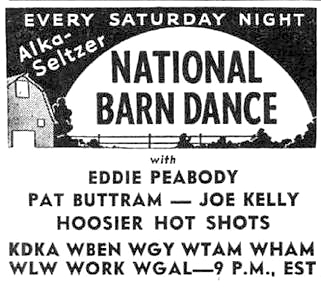Henry Cargill made his fortune cutting pine in the Greenock Swamp, a fortune sufficient to found the village of Cargill in 1879, midway between Paisley and Walkerton, and outfit it with the latest improvements.
Henry introduced the telephone in 1887. By the turn of the century his hydro power plant on the Teeswater River provided electricity to the residents, who paid 25 cents per light bulb. The main street was lined with sidewalks and lit by electric lights.
As for how radio came to Cargill, the story is told in the 1995 Yearbook of the Bruce County Historical Society. Until about 1930 very few people in town had a radio set. To follow a big event you had to find one of the few sets in town. Cargill old-timer Tom Meyer remembered when he listened to the Jack Dempsey–Gene Tunney fight at Joe Schuett’s implement shop. (Tunney won the famous Long Count Fight of Sept. 22, 1927.)
Elmer Weber owned one of the earliest radios in Cargill, an Atwater Kent. His son Gerry recalled the afternoon when Fred Anderson, Hugh Campbell and Jerome Cassidy came over to listen to a World Series game. Reception was bad and Elmer fiddled with the knobs until suddenly the radio emitted a puff of smoke and burst into flames. The men opened a window and chucked the set out the back.
This was the 1930s, the golden age of radio, when you could pull in stations from Buffalo, Chicago and further afield. Between 1922 and 1932, the number of commercial radio stations in Canada doubled to 77. In the States, 12 million households owned a radio in 1930, and despite the Depression this figure rose to over 28 million by 1939.

Advertisement for the National Barn Dance radio show. WBEN broadcast from Buffalo. (Submitted photo)
Another Cargill man, Morley Wright, decided to copy a scheme used in Elmwood to feed radio programs to the homes of people without a receiver. Morley got his neighbours to pay to listen to the radio. He bought the most powerful set on the market and ran wires from it, strung between the telephone poles, to a horn loudspeaker in each house. The speaker had a control knob for on-off and volume. Mr. Wright charged 50 cents a month for his streaming radio service.
Morley Wright’s little business did well. The village barber took two speakers, one for the shop at the front of the house, and one in the kitchen.
Subscribers loved listening to Jim Hunter with the news, Lum and Abner, Uncle Ezra, Amos & Andy, National Barn Dance and hockey. Of course they had to listen to whatever station Morley was tuned to. That was a major problem on Saturday night, when the National Barn Dance clashed with hockey. Morley got used to complaints along the lines of “turn off the damn Barn Dance, we want to hear the hockey game”.
Eventually Morley Wright sold his radio service to Norman Schuett. Norm’s wife operated the radio from her kitchen. The Schuetts introduced a new feature, broadcasting a Cargill band, “The Dixie Boys”, live from their living room. Started by Jerome Cassidy (violin), the Dixie Boys included Norm’s daughter Bonnie (piano), Howard Chesney (drums) and Gerry Cassidy (vocals). A later addition was Frank Fruin on saxophone and vocals. The Dixie Boys played at dances all through World War II.
Cargill history lives on at the Bruce County Bookstore. Owner Kevin McKague has declared Sunday, July 3 to be Bruce County Historical Society Book Day, showcasing many of the Society’s books on county history, like The Bruce, and their authors, whom you may meet from 1 p.m. to 3 p.m. The bookstore is at the back of the Mill Pond gallery in downtown Cargill.



